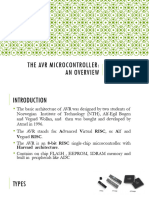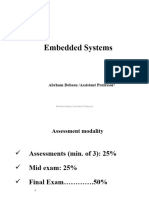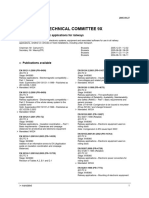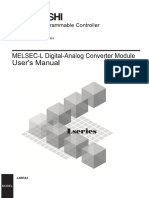100% found this document useful (1 vote)
76 views31 pagesAVR Architecture and Assembly Language
The document provides an overview of AVR microcontroller architecture and assembly programming, focusing on registers, data memory, and code memory. It details the functions of general purpose registers, I/O memory, and the status register, as well as instructions for accessing and manipulating data memory. Additionally, it explains the significance of the program counter in executing instructions and the relationship between different memory types in AVR microcontrollers.
Uploaded by
u20150540Copyright
© © All Rights Reserved
We take content rights seriously. If you suspect this is your content, claim it here.
Available Formats
Download as PDF, TXT or read online on Scribd
100% found this document useful (1 vote)
76 views31 pagesAVR Architecture and Assembly Language
The document provides an overview of AVR microcontroller architecture and assembly programming, focusing on registers, data memory, and code memory. It details the functions of general purpose registers, I/O memory, and the status register, as well as instructions for accessing and manipulating data memory. Additionally, it explains the significance of the program counter in executing instructions and the relationship between different memory types in AVR microcontrollers.
Uploaded by
u20150540Copyright
© © All Rights Reserved
We take content rights seriously. If you suspect this is your content, claim it here.
Available Formats
Download as PDF, TXT or read online on Scribd
/ 31




















































































